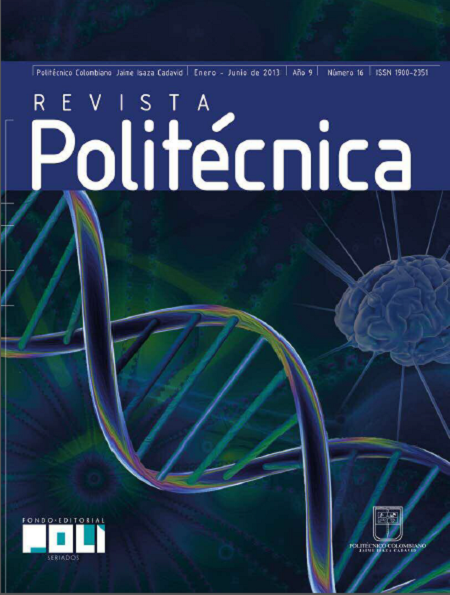Descripción y análisis de desempeño de sistemas de radio sobre fibra con enlaces de 900mhz con modulaciones en fase y en cuadratura
Palabras clave:
Radio sobre fibra, análisis de tareas, componentes en fase y en cuadratura, modulación en fase, modulación en cuadratura, OFDMResumen
La comunidad científica y las empresas de telecomunicación han desarrollado métodos que permiten la optimización del ancho de banda disponible en los diferentes medios de comunicación. Dada la alta capacidad de transporte de información que ofrecen los enlaces de fibra óptica y la flexibilidad que aportan los enlaces inalámbricos, la tecnología de radio sobre fibra (RoF Radio over Fiber) ha mostrado ser una alternativa que promete ayudar a resolver el problema de la capacidad de transporte y el acceso a la red. El desempeño de los enlaces basados en la tecnología de RoF ha sido analizado ampliamente en la literatura; sin embargo, hace falta establecer cuáles son las condiciones óptimas de operación en términos de la tasa de error de símbolo (SER Symbol Error Rate) cuando son modificadas tanto la distancia de los enlaces de fibra como los tipos de
modulación utilizados en la interface de radio del sistema. Se analiza el comportamiento de un sistema de RoF con portadoras OFDM (Orthogonal Frequency Division Multiplexing) a 900Mhz cuando son modificadas las variables de distancia en fibra y tipo de modulación multinivel (en fase y en cuadratura). Es posible establecer que la modulación 16 QAM ofrece el mejor balance entre eficiencia espectral, rendimiento en términos de tasa de error de símbolos y distancia, mostrando tasas de error de símbolo (SER) de 10 para configuraciones con enlaces ópticos de 60Km de distancia.
Palabras clave:Radio sobre fibra, modulación en fase, modulación en cuadratura, OFDM.
ABSTRACT
The research community and telecommunications companies have developed new methods for bandwidth optimization. The high transport capacity of optic fiber links and the high flexibility of wireless networks have done the Radio over Fiber (RoF) technology be considered as a promising alternative for the solution of the increasing bandwidth and network access requirements. The performance of the RoF systems has been widely analyzed; however, it is also important to understand the behavior of the Symbol Error Rate (SER) when the distances and the modulation schemes are modified. The behavior of a RoF system with OFDM (Orthogonal Frequency Division Multiplexing) carriers at 900 MHz is evaluated considering the variation of the distance in the optic fiber inks and the multilevel modulation (in phase and in quadrature) in the radio interfaces. It is possible to state that the 16 QAM modulation schema offers the best balance between spectral efficiency, performance in terms of the symbol error rate (SER) and distance. With this modulation schema it is possible to achieve distances of 60 Km with SER values of 10.
Keywords: Radio over fiber, in-phase modulation, quadrature modulation, OFDM.


 _
_


















